 |
 |
 |
| |
NAFLD Independently Tied to Worse Physical Quality of Life With HIV
|
| |
| |
International Workshop on HIV and Aging, September 23-24, 2021
By Mark Mascolini for NATAP and Virology Education
Depressive symptoms did not become less frequent with age in a 421-person analysis of people with HIV and HCV infection in France [1]. And depression persisted in people cured of HCV infection.
Research shows higher depression prevalence in people with HIV than in the general population, and people coinfected with HIV and HCV suffer depression more often than those with only one of these infections [2]. In France and other countries, depressive symptoms become less frequent with increasing age in the general population. Researchers working with the HIV/HCV-coinfected ANRS CO13 HEPAVIH cohort explored the impact of age on depressive symptoms in coinfected people in France.
This analysis rests on a cross-sectional survey completed between February 2018 and May 2019 in the prospective HEPAVIH cohort.Participants completed a self-administered questionnaire that included the Patient Health Questionnaire (PHQ-9) to assess depression. In PHQ-9 a score from 4 to below 14 means mild to moderate depressive symptoms, 14 to 19 means moderately severe depressive symptoms, and above 19 means severe depressive symptoms. People with PHQ-9 results and known age formed the study population.
Of the 421 study participants, 307 (73%) were men. Just over half, 53%, did not have a steady partner, 60% had less than a bachelor's degree, 52% had no job, and 53% got HCV infection while injecting drugs.
Splitting the entire cohort into three groups by age, the researchers found that prevalence of depressive symptoms did not vary significantly by age: 54.6% in people younger than 52, 58.3% in those 52 to 59, and 50% in those 59 or older (P = 0.71). Rates of mild to moderate depression, moderately severe depression, and severe depression were similar across these three age groups: 45.5%, 6.5%, and 2.6% in the under-52 years group; 50%, 6.5%, and 1.7% in the 52-59 group; and 40.3%, 6.1%, and 3.5% in the 59-or-older group.
When the researchers looked at the 399 people cured of HCV infection, they again found statistically similar overall prevalence of depressive symptoms in the three age group: 54.9% in people under 52, 58.3% in people 52 to 59, and 49.1% in people 59 or older (P = 0.65). And rates of mild to moderate depression, moderately severe depression, and severe depression remained similar in the three age groups: 45.1%, 7%, and 2.8% in people younger than 52 years; 50%, 6.5%, and 1.8% in people 52 to 59; and 39.3%, 6.2%, and 3.6% in people 59 and older.
"Unlike findings for the French general population," the ANRS team concluded, "the prevalence of depressive symptoms did not decrease with age in the survey sample of HIV-HCV co-infected people, including those cured of HCV."
References
1. Marcellin F, Bregigeon-Ronot S, Lions C, et al. Not too old to feel down: the prevalence of depressive symptoms does not decrease with age in people living with HIV and HCV (ANRS CO13 HEPAVIH). International Workshop on HIV and Aging, September 23-24, 2021. Abstract 27.
2. Fialho R, Pereira M, Rusted J, Whale R. Depression in HIV and HCV co-infected patients: a systematic review and meta-analysis. Psychol Health Med. 2017;22:1089-1104.
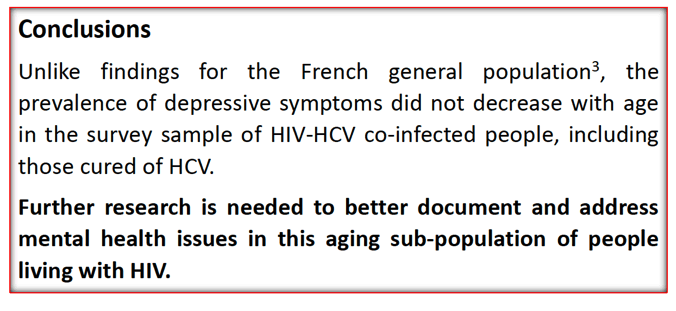

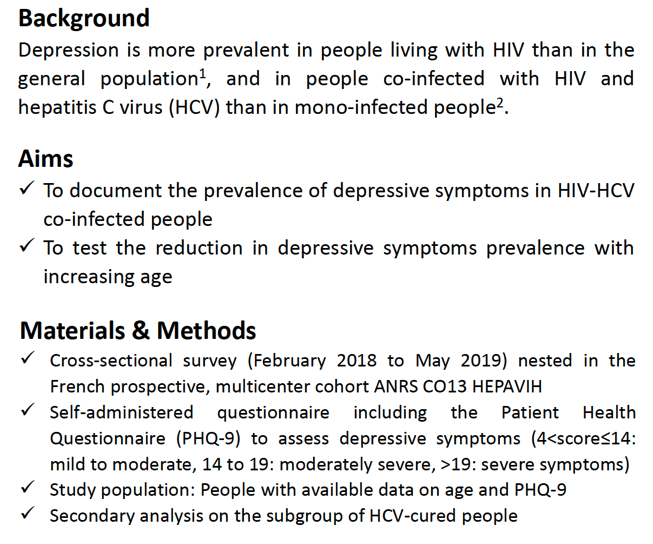
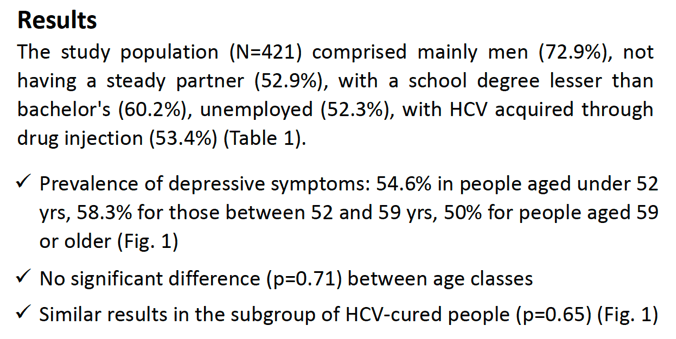
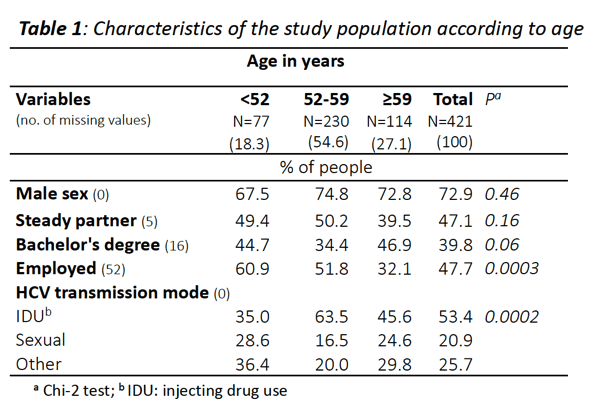
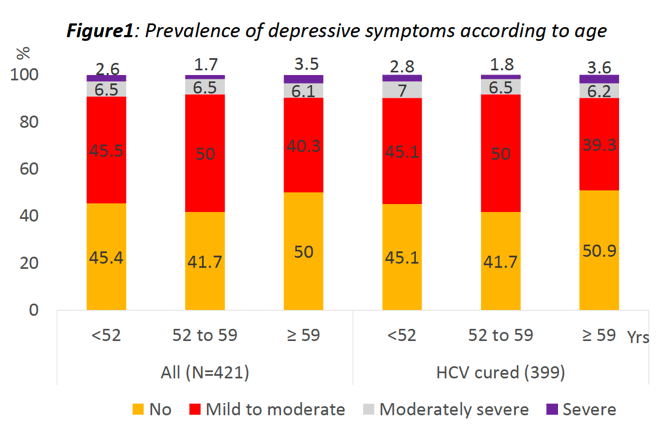
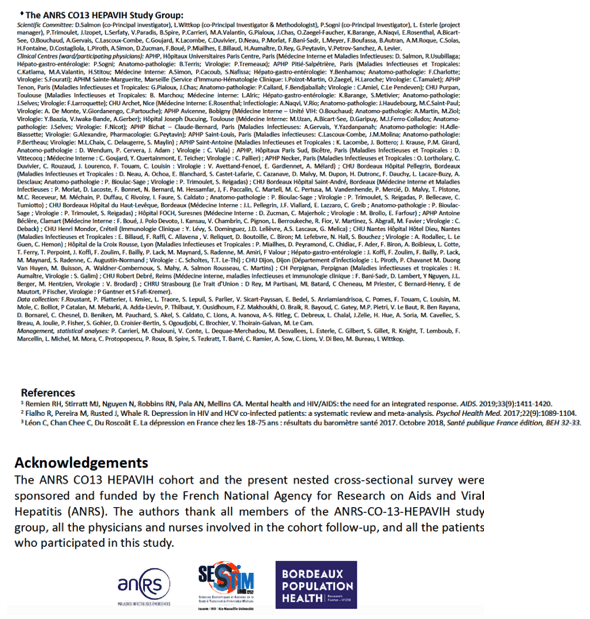
|
| |
|
 |
 |
|
|